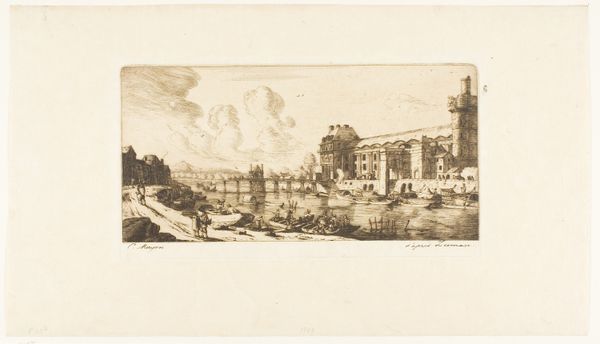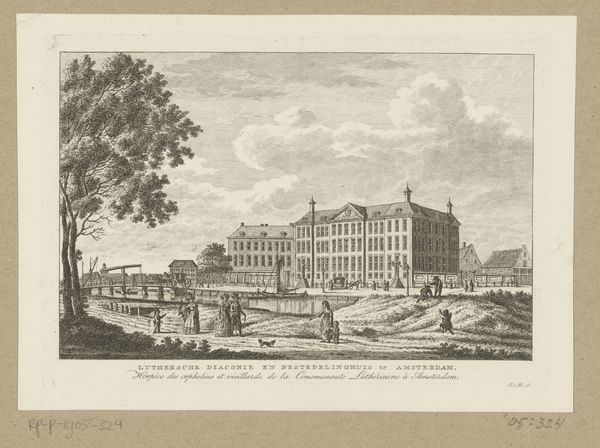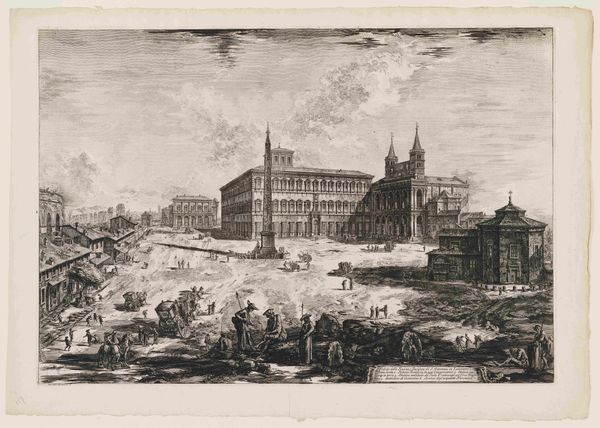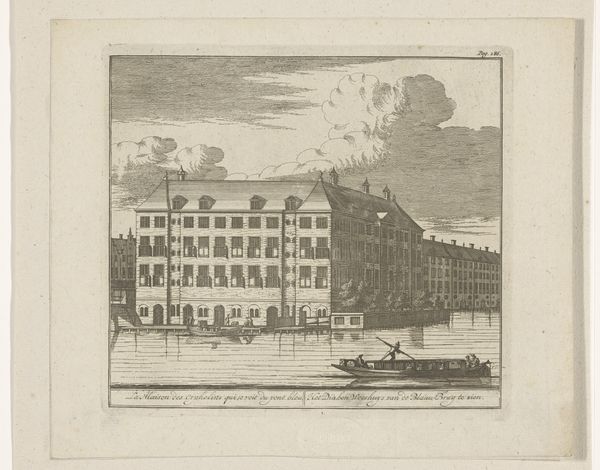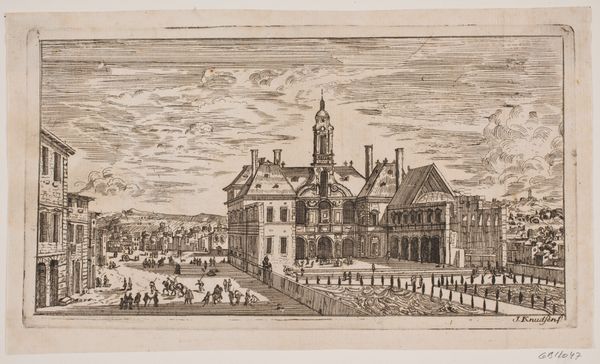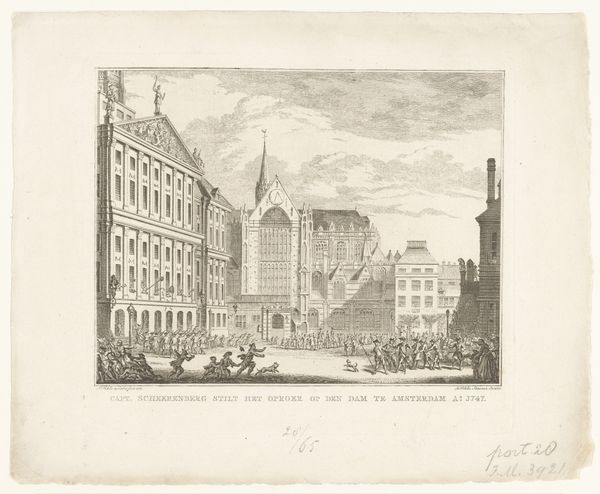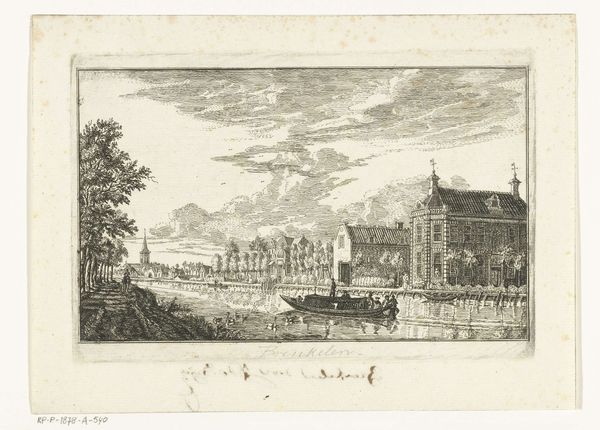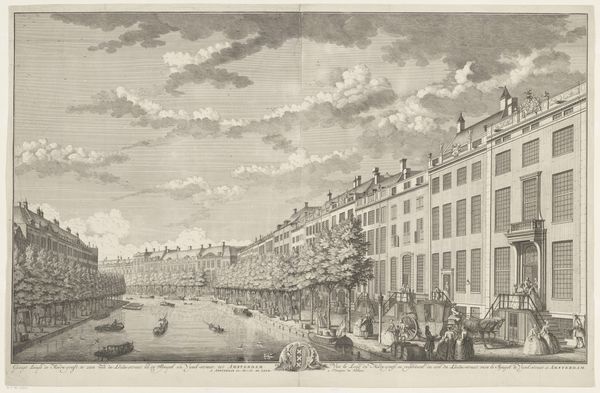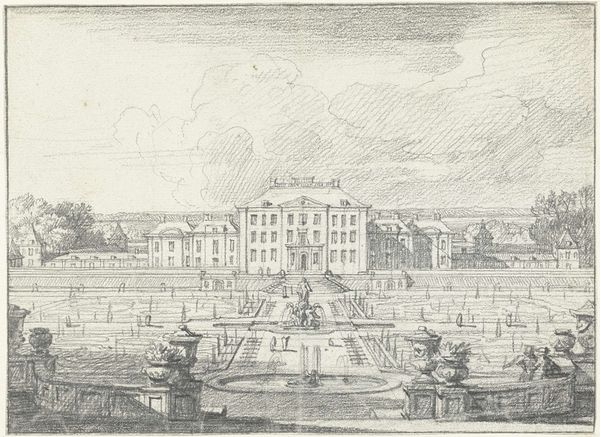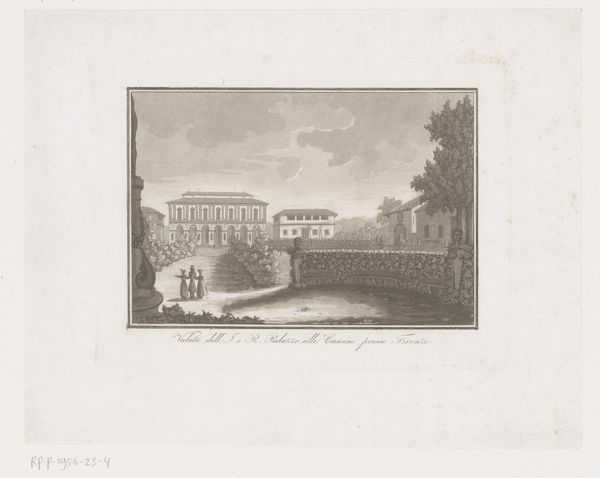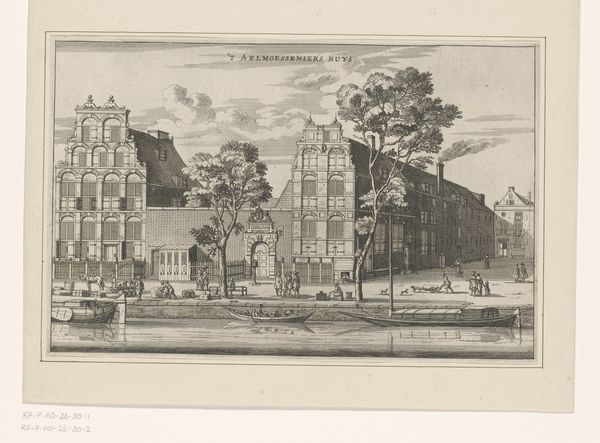
L'Ancien Louvre (The Old Louvre, Paris, after Zeeman) 1865 - 1866
0:00
0:00
Dimensions: plate: 7 5/8 x 10 1/2 in. (19.4 x 26.7 cm)
Copyright: Public Domain
Editor: This print has a brooding quality, almost gothic. The sky feels particularly ominous above the grand architecture. Curator: Indeed. What we’re looking at is Charles Meryon’s "L’Ancien Louvre (The Old Louvre, Paris, after Zeeman)", created between 1865 and 1866. Meryon was known for his cityscapes of Paris, often laden with a sense of social commentary, and that gothic sensibility is often associated with the romanticism style. Editor: It's the sheer density of lines that gets me – look how the etching captures the weight of the buildings and the churn of the river. The formal symmetry of the buildings is striking too, with the darker shades of ink drawing the eye upward and towards the center. Curator: Meryon meticulously studied the social changes happening in Paris and channeled his anxieties about modernity and its effect on marginalized groups into his work. This depiction of the Louvre isn't just a building; it represents a powerful institution amidst a rapidly changing urban landscape. Editor: Do you think he felt this change in the building itself? Look at how dark he makes the windows of the Louvre; you almost feel it's brooding down at the populace in boats in front of it. Curator: Exactly! The figures in the boats become almost symbolic, tiny in comparison to the monolithic Louvre, a representation of the everyday person navigating this world reshaped by power. These images give a voice to the often unseen struggles of common folk during this era. It allows a space for reflection on the politics of space. Editor: That's interesting, I hadn't seen that contrast before, but it adds another level of richness. The tonal gradations alone are remarkable in conveying the density of form—really draws the viewer into an immersive engagement with line and shape. Curator: Well, perhaps looking at Meryon’s print, with that lens we have more clarity regarding the tensions shaping his vision of a changing Paris. Editor: And I will say that through looking at it from the viewpoint of political tension I think I'm enjoying it on an artistic and formal level a great deal more too.
Comments
No comments
Be the first to comment and join the conversation on the ultimate creative platform.
